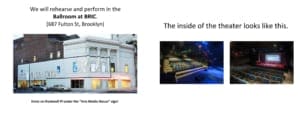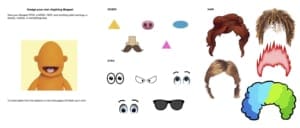- Планирование
- Обучение
- Дистанционное обучение и обучение
Запись инклюзивных видеороликов для асинхронного обучения
В этом ресурсе вы найдете руководство по созданию записанных видеороликов для поддержки учащихся с различными потребностями. Он был разработан ArtConnection Teaching Artists и был щедро предоставлен для включения в GIVE Guide.
Быстрые выводы
 Пытаться
Пытаться
Поделитесь повесткой дня, как если бы вы делали это в живом классе. Вы можете поделиться повесткой дня в текстовой форме до того, как студенты посмотрят видео, или вы можете поделиться повесткой дня устно и визуально в начале видео.
 Пытаться
Пытаться
Find ways to support interaction and engagement to the extent possible in a recorded video. This could come in the form of encouragement (e.g., “You’re doing great!”), or in the form of worksheets and polls to complete during or after the video.
 Помнить
Помнить
Use the acronym VAMPIRES to remember what to include when creating your videos.
Не знаете, что включить в заранее записанное видео, чтобы удовлетворить разнообразные потребности в обучении?
Think VAMPIRES!

Художники по обучению ArtsConnection: Лаура Боргвардт, Керри Уоррен, Энн Паскуале и Ребекка Стримайтис
- Добавьте наглядные пособия, чтобы проиллюстрировать концепцию, поделиться словарным словом или продемонстрировать возможности.
- Не загромождайте свой фон.
- Держите свои движения в кадре.
- Используйте крупный план, чтобы показать конкретное движение или задачу, если это поможет прояснить, что вы просите студентов сделать.
Пример видео: Добавление визуалов

ArtsConnection Teaching Artists: Лаура Боргвардт преподает в видео.
- Send an agenda to students and Classroom Professionals along with the video, and/or share one in the video itself.
- Сделайте повестку дня интерактивной. Вернитесь и отметьте все или посмотрите, что будет дальше.
- Post instructions in the learning management system your class uses, and/or in the email to students with the video lesson.
- Example: “Today we will be puppeteers. All you need are three household objects. If you have a piece of paper, a marker, and tape, that would be great as well, but it’s okay if you don’t. In this video, we will a) remind ourselves what a puppeteer does, b) find objects from around our home, c) turn those objects into puppets, and d) practice bringing our puppets to life! After watching this video, you can have someone take a picture or video of you making your puppet come to life and post it to your Google Classroom. I can’t wait to see your awesome puppets!”-Ms. Laura
- Add a Social Story at the beginning of a residency to help students know what to expect. A Social Story–or social narrative–is a learning tool that describes and shows what might happen during a specific social experience. In this case, that social experience is your residency. Your Social Story can be written/visual/a video. Sample pages from a visual Social Story:

Фото: Социальная история БРИК
Пример видео: Повестки дня

Художники по обучению ArtsConnection: Лаура Боргвардт и Энди Гаукель
- Show, say, and write other ways for students to engage with the lesson. Consider including
- ways to participate either standing or sitting;
- alternative materials students could use if they don’t have those required in the lesson;
- other ways to participate if students don’t have any materials at all.
Пример видео: Модификации и приспособления

Художники по обучению ArtsConnection: Энди Гаукель, Энджел Томпсон, Джоджо Гонсалес, Ребекка Стримайтис
- Подумайте о том, чтобы найти на уроке моменты радости и энергии.
- Держите тон вашего урока позитивным и спокойным, избегая давать очень сложные и обязательные задания.
- Make it fun, theatrical, and entertaining by integrating humor, props, jokes, silly voices, etc. while keeping it age-appropriate.
- Попробуйте добавить музыку, чтобы сделать игру более увлекательной. Просто убедитесь, что музыка не мешает слышать или обращать внимание на направления.
- Добавьте видео-образцы шедевров, например отрывок из постановки живого театра, известную картину и т. Д.

Художники по обучению ArtsConnection: Керри Уоррен, Джоджо Гонсалес и Лаура Боргвардт
- Pause for responses if you pose questions during the video.
- Поощряйте студентов собирать материалы или выполнять задание. Например, вы можете попросить их отправиться на охоту за мусором в своем доме, чтобы найти три объекта, которые могут стать марионеткой! Предложите им приостановить видео и снова встретиться с вами у экрана.
- Include the same kind of positive reinforcement you might use while teaching live: “Great! Wow, that was amazing! You’re rocking it!!”
- Speak to students directly: “Listen, I know you are an amazing dancer, so let’s take this up a notch!”
- Подойдите ближе к камере, чтобы добиться более интимного взаимодействия.
- Предоставьте инструкции о том, как взаимодействовать с видео, чтобы помочь учащимся самостоятельно ориентироваться в контенте и помочь классным специалистам или воспитателям узнать, как помочь своему учащемуся во время видеоурока.
- Consider providing a worksheet or activity to do after the video. This can happen in many formats, including, but not limited to,
- Google Slides—this can be made interactive by providing opportunities for students to drag images, add words, etc.;
- PDF—this can be made writable or editable;
- Google Forms—this format can be great for quizzes on content or to collect student interests, feedback, and creative work. They can be made easy for students to complete by including buttons that can be clicked instead of having to type. You can also add visuals to the responses.

Фото: Лаура Боргвардт
Пример видео: Взаимодействие

ArtsConnection Teaching Artists: Angel Thompson, Kerry Warren, Andy Gaukel, & Rosalind Lilly
Дистанционное обучение может быть физически изолированным. Ритуалы могут помочь учащимся почувствовать связь и почувствовать более сильное чувство общности. Кроме того, одно и то же занятие в начале каждого урока также может быть полезно для учащихся, которым требуется дополнительная поддержка для навигации по переходам.
Think about consistency in your video components, listed below. Not all of these have to be the same every lesson, but creating a sense of ritual or routine for at least some components might be a good idea. The most important element is your sincerity and commitment to your opening and closing rituals.
- Greeting.
- Closing.
- Structure of lesson.
- Repetition of content/skills.
- Examples of opening rituals that work well in remote teaching and learning settings include
- ringing a singing bowl or a chime;
- leading students in several deep breaths together;
- guiding students through a stretch or movement, warm-up or shake-out;
- inviting students to strike poses to show how their brains/bodies/hearts are feeling.
- Examples of closing rituals that work well in remote teaching and learning settings include
- leading the class in pulling the energy created away from the camera with our hands, and sending this into our physical spaces;
- taking a few big breaths and a moment to reflect;
- sharing a virtual hug before ending the video;
- high-fiving the camera as you end the video;
- guiding students in a stretch;
- closing by ringing a singing bowl or chime or other instrument;
- leading students in a chant and pose combination.
Пример видео: Ритуалы и распорядки
More on incorporating rituals from ArtsConnection Teaching Artist Rosalind Lilly: Ритуалы в виртуальных учебных пространствах Видео

Художники по обучению ArtsConnection: Джоджо Гонсалес, Лаура Боргвардт и Ребекка Стримайтис
- Постарайтесь вырезать ненужные слова. Например:
- Version 1: Musical theater is a classic example of a genre of American theater. Musical theater actors need to be aware of lots of different things. They have to be “triple threats”—they have to be great singers, great actors, and they need to know how to dance. There are a lot of aspects that go into making a musical.
- Версия 2: В музыкальном театре мы поем, танцуем и играем, чтобы рассказать историю.
- Ask yourself what is essential in the lesson. Не пытайтесь включить в урок все. Выберите одну тему, навык, концепцию и т. Д. Для изучения.
- Предоставьте четкие пошаговые инструкции.
- Think about structuring your instructions using the format: “First,” “Next,” “Then,” “Last.”
- Model what you are asking students to do. Consider structuring your lesson using the “I do/We do/You do” framework in which you model an example, then work through an example with the students, and finally the students complete the task themselves.
- Speak slowly and clearly.
- Tailor your video length to an age-appropriate attention span. Try to keep video lessons short and sweet.
Пример видео: Экономика языка

Художник-преподаватель ArtsConnection: Лаура Боргвардт
- Adding subtitles supports access for students who are deaf/hard of hearing, visual learners, those who can’t understand your speech, those who are learning English, those who are learning to read, etc.
- Один из способов проверить свои субтитры - воспроизвести видео с выключенным звуком. Вы все еще можете следовать своему уроку?
- You may want to add title cards to separate sections of your video, which can make the lesson clearer.
- Если возможно, предложите субтитры на других языках.
Пример видео: Субтитры
Пример видео
Below is an example video in which Teaching Artist Laura Borgwardt aimed to use VAMPIRES in her asynchronous video class. It may not be perfect, but we hope it’ll be helpful.

